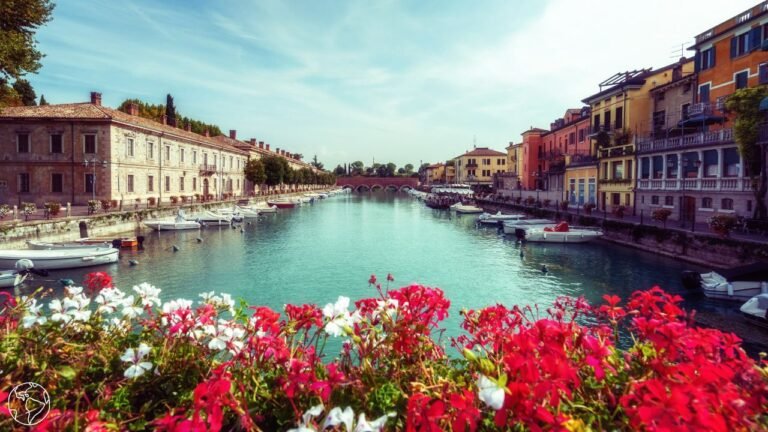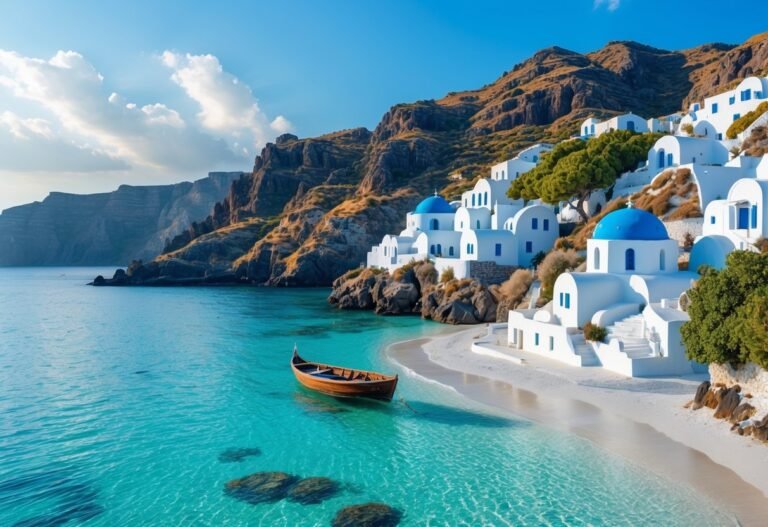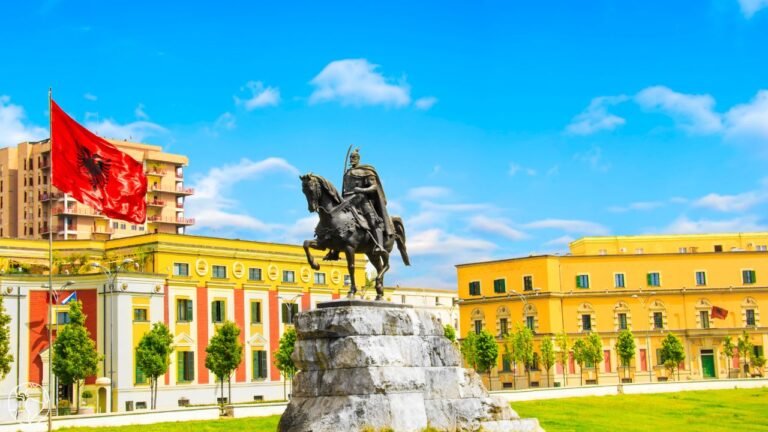If you only have a weekend to explore Milan, you’ll want to focus on the city’s top sights, local hotspots, and practical travel tips that make your trip smooth and enjoyable.
Milan offers a rich mix of history, culture, fashion, and food, all packed into a compact city that’s easy to navigate in a short time.
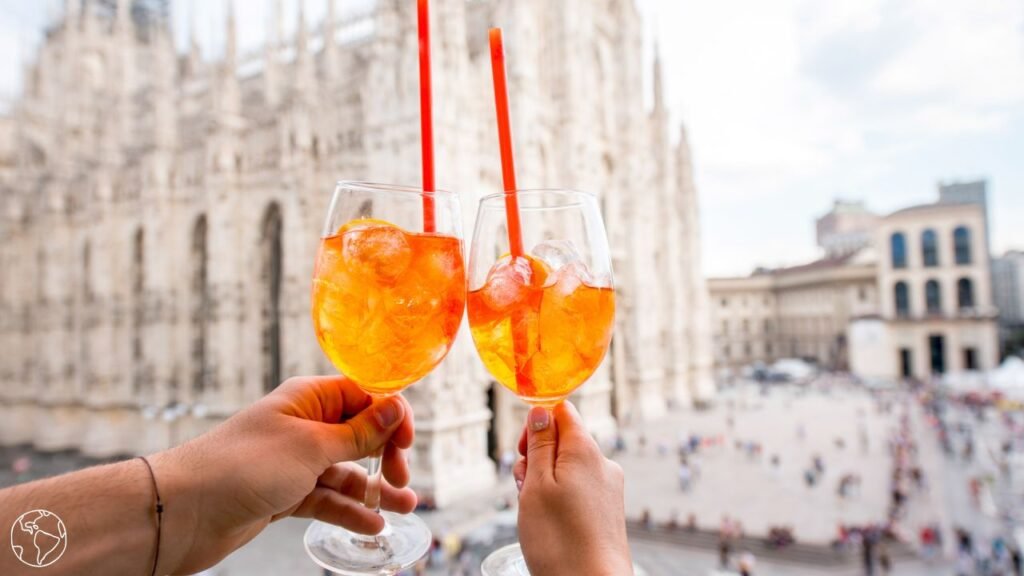
The best way to experience Milan in just two days is to visit key landmarks like the Duomo, explore hidden gems, enjoy local cuisine, and take in some of the city’s unique cultural experiences.
Along the way, you’ll pick up insider tips to dodge crowds, catch free museum days, and stumble onto spots most tourists never even hear about.
This guide isn’t just a checklist—it’s a local’s playbook for getting the most out of your quick break.
You’ll find the essentials and a little extra, so you can soak up Milan without feeling rushed or lost in the shuffle.
Essential Travel Planning for a Weekend in Milan
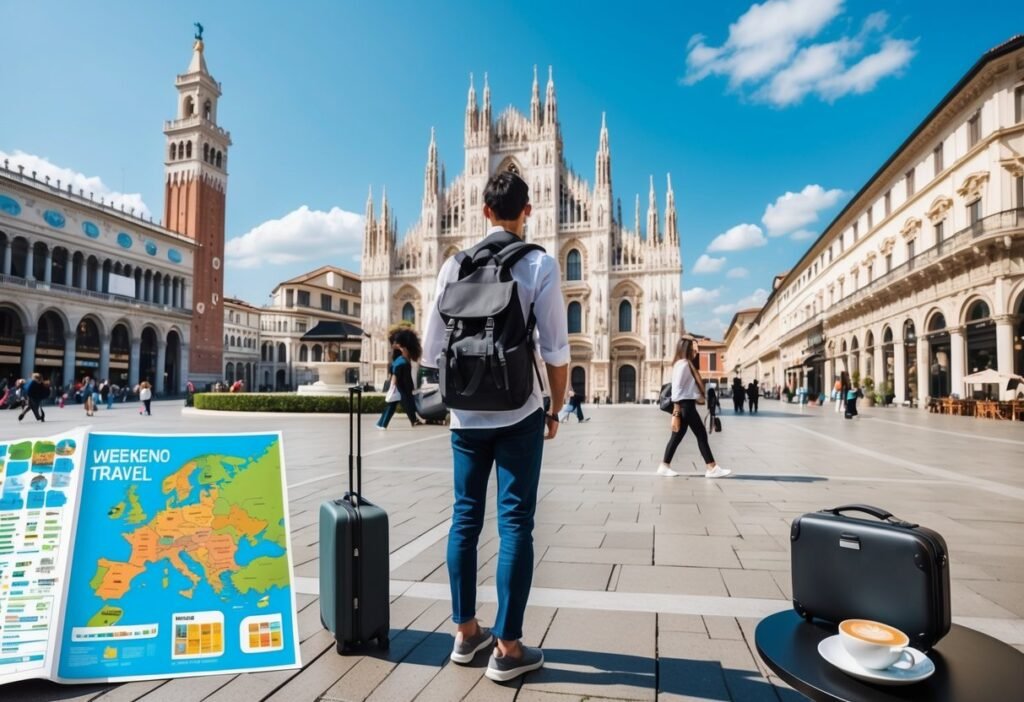
To make the most of your weekend in Milan, you’ll want to plan carefully.
Knowing the best time to visit, how to arrive, getting around the city, and where to stay will help you save time and avoid stress.
Each detail matters when you only have a short visit.
Best Time to Visit Milan
The best time to visit Milan is during spring (April to June) and early autumn (September to October).
The weather is mild and comfortable, perfect for walking around the city.
Summer can be hot and crowded with tourists, while winter tends to be cold and foggy.
If you want to avoid large crowds, try weekdays instead of weekends for popular sites.
Milan also hosts major fashion events in February and September, which can bump up hotel prices and make rooms scarce.
How to Get to the City
Milan has two main airports: Milan Malpensa Airport (MXP) and Milan Linate Airport (LIN).
Malpensa is the largest and handles most international flights. It’s about 50 km northwest of the city center, and you can reach downtown by train, bus, or taxi in 45-60 minutes.
Linate Airport is closer, only about 8 km east of the city center, mainly serving domestic and European flights.
A taxi or bus takes around 20-30 minutes to reach central Milan.
If you’re coming from elsewhere in northern Italy or Europe, trains are fast and convenient, linking Milan with cities like Turin, Venice, and Zurich.
Navigating Milan: Transportation Tips
Milan’s public transport network includes metros, trams, and buses.
The metro system is your fastest option for moving around quickly, covering most tourist areas and running until midnight.
You can buy single tickets or day passes for unlimited travel on all public transport.
Don’t forget to validate your ticket when you enter—no one wants a fine.
Walking is also a solid way to explore central Milan, especially around the Duomo and Brera.
Driving in the center? Not recommended—traffic and parking are a headache you don’t need.
Where to Stay During Your Weekend
Look for accommodation near the city center or close to a metro station to save travel time.
Popular neighborhoods include Centro Storico, Brera, and Porta Nuova.
Centro Storico puts you within walking distance of major sights like the Duomo and Galleria Vittorio Emanuele II.
Brera is known for its artsy vibe and cozy cafes, offering a more laid-back atmosphere.
If you prefer modern amenities, Porta Nuova has newer hotels and solid transport links.
Book early, especially if your visit overlaps with events like Milan Fashion Week.
Must-See Attractions and Historic Landmarks
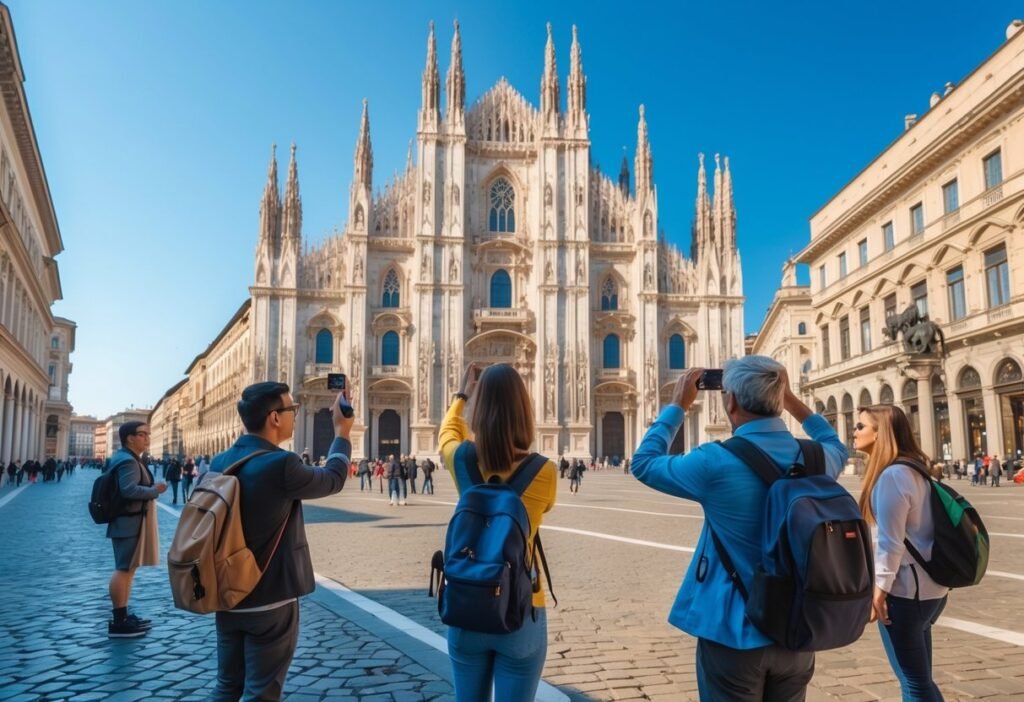
In Milan, you’ll find key sights blending history, art, and architecture all within walking distance.
These places offer a window into Milan’s rich past and lively culture. Each spot is unique, so don’t rush—give yourself time to actually see them.
Duomo di Milano and Rooftop Views
The Duomo di Milano is the city’s heart and soul.
This massive Gothic cathedral took nearly six centuries to finish—imagine the patience! Its façade is covered with hundreds of spires and statues.
Inside, you’ll find stunning stained glass and intricate sculptures.
The real treat, though, is the rooftop. Climb the stairs or hop in the elevator and you’ll be walking among spires with panoramic views of Milan and, if you’re lucky, the Alps in the distance.
Bring a camera—the views are unreal and the gothic details up close are something else.
Galleria Vittorio Emanuele II
Right next to the Duomo sits the Galleria Vittorio Emanuele II, a historic shopping arcade from the 19th century.
It’s got a glass dome, elegant ironwork, and houses high-end boutiques, cafes, and restaurants—a perfect spot for some window shopping or a stylish coffee break.
The floor mosaics are famous, especially the bull mosaic—give it a spin for good luck (seriously, everyone does it).
The Galleria links Piazza del Duomo and Piazza della Scala, making it both a shopping mecca and architectural marvel.
Castello Sforzesco and Parco Sempione
Castello Sforzesco, or Sforza Castle, was once the fortress of Milan’s ruling family.
Today, it’s home to several museums filled with art, historical artifacts, and even ancient musical instruments.
Wander the courtyard and halls for a taste of Milan’s medieval and Renaissance history.
Behind the castle you’ll find Parco Sempione, a big green park that’s perfect for a walk or a quick picnic.
The park also features the Arco della Pace, a triumphal arch with its own stories to tell.
The Last Supper at Santa Maria delle Grazie
Santa Maria delle Grazie is the church where you’ll find Leonardo da Vinci’s The Last Supper.
This 15th-century mural is world-famous, so you’ll need to book tickets far in advance—spots are limited to preserve the artwork.
The church itself is a gem of Renaissance architecture.
Seeing The Last Supper up close is something you won’t forget; Leonardo’s detail and emotion in the scene are still striking after all these centuries.
Art, Culture, and Iconic Milanese Districts
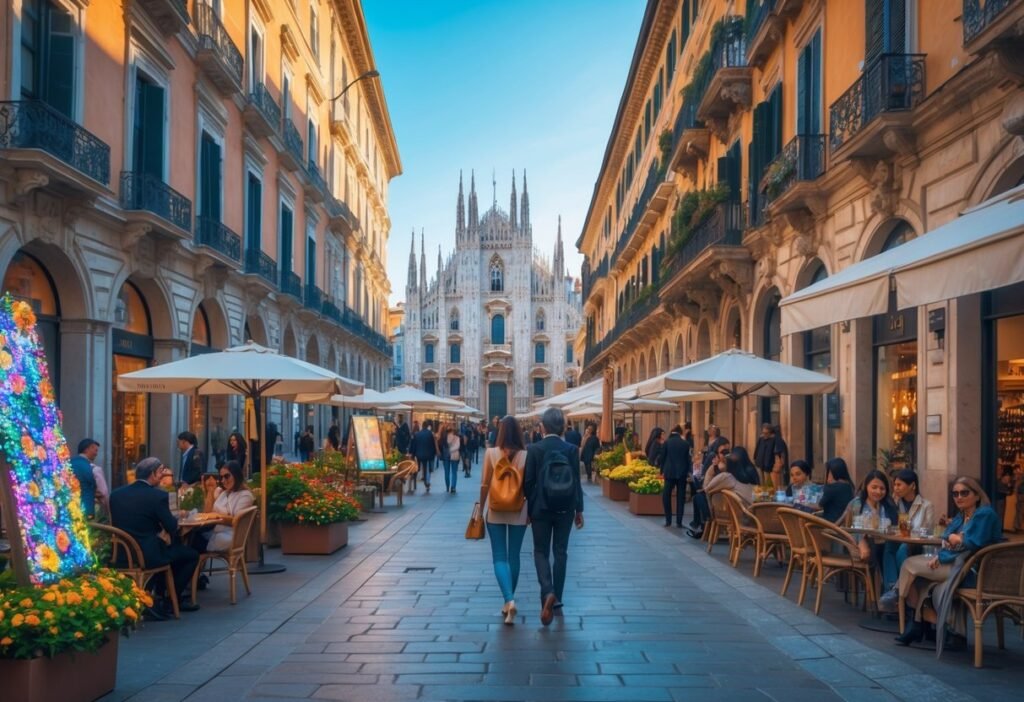
Milan’s got art, history, and lively neighborhoods that are worth exploring on foot.
You’ll stumble across world-class galleries, vibrant streets, and museums that showcase both classic and modern works.
Pinacoteca di Brera and Art Collections
The Pinacoteca di Brera is one of Milan’s best art museums, packed with masterpieces by Caravaggio, Raphael, Mantegna, and more.
The galleries are filled with Renaissance and Baroque paintings, but you’ll also find sculptures and drawings for a broader look at Italian art.
The museum’s in the Brera district, which adds a bit of old-school charm to the experience.
Tickets are affordable, and it’s easy to reach by public transport.
Exploring the Brera District
Brera itself is a cozy, artistic neighborhood with cobbled streets, antique shops, and plenty of cafes.
It’s got an authentic Milanese vibe, and you’ll bump into art galleries and boutiques at every turn.
The area hosts events, markets, and the occasional street performance, so there’s always something happening.
Honestly, it’s a great place for a lazy stroll, an espresso, or to try some local Milanese dishes.
Brera mixes creative energy with historic architecture—definitely not just for art buffs.
Museo del Novecento Experience
The Museo del Novecento focuses on 20th-century Italian art, with works by Umberto Boccioni, Giorgio de Chirico, Lucio Fontana, and others.
It’s a different vibe from the older museums—think modern and contemporary pieces that might surprise you.
Located near the Duomo, it’s easy to add to your list.
The museum’s design is cool, and the views of the cathedral from the upper floors are worth a look.
You’ll find both permanent collections and rotating exhibitions, so there’s always something new to see.
Fashion, Shopping, and Milan’s Modern Edge
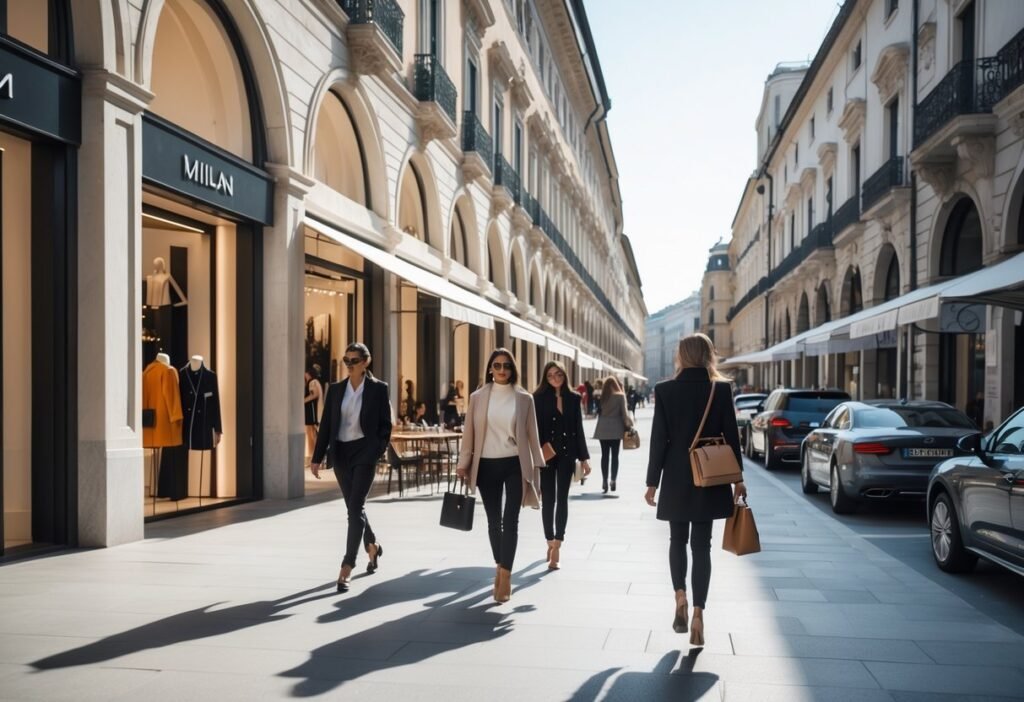
Milan is where high fashion, classic shopping spots, and futuristic architecture all collide.
You’ll see luxury brands, historic arcades, and green skyscrapers—each with its own story and vibe.
Quadrilatero della Moda: The Fashion Quarter
Quadrilatero della Moda is the ultimate luxury shopping district.
Four streets packed with designer stores—Prada, Gucci, Versace, you name it—plus stylish cafes and art galleries on every corner.
It’s not just about shopping; this is where Milan’s fashion culture lives and breathes.
If you’re into exclusive styles or just want to people-watch during Fashion Week, this is the place.
Shopping at Galleria Vittorio Emanuele II
The Galleria Vittorio Emanuele II is more than a shopping arcade—it’s an experience under a stunning glass dome.
Here you’ll find Italian icons like Versace and Louis Vuitton, plus cozy cafes and restaurants if you need a break.
The architecture is so grand, it almost distracts you from the shopping (almost).
It’s right in the city center, so you really can’t miss it.
Bosco Verticale and Contemporary Architecture
Bosco Verticale is Milan’s famous “vertical forest”—two residential towers covered in thousands of trees and plants.
It’s a bold experiment in green architecture and a sign of Milan’s push for sustainability.
You can admire the towers from street level or nearby parks—they really stand out against the city’s older skyline.
The blend of nature and sleek design here is honestly pretty inspiring, and it’s a cool symbol of where Milan is heading.
So, is a weekend in Milan enough? Maybe not for everything, but it’s plenty to fall in love with the city’s energy, style, and history.
Whether you’re here for the art, the shopping, the food, or just to soak up the vibe, Milan’s got a way of surprising you.
Take it slow, wander off the main roads, and don’t be afraid to linger over a coffee or a view—sometimes, that’s where the real magic is.
Buon viaggio!
Day Trip to Lake Como
If you’ve got an extra day or just want a break from the city, Lake Como is a fantastic escape.
It’s only about an hour from Milan by train, making it a super easy day trip.
To get there, hop on a direct train from Milano Centrale to Como S. Giovanni station.
Once you arrive, you’ll find yourself surrounded by mountains, charming lakeside villages, and—if you’re lucky—maybe even a celebrity or two hiding out in a villa.
Stroll the lakefront, take a ferry to Bellagio or Varenna, or just relax by the water with a gelato.
It’s a different pace from Milan, but the scenery is unforgettable.
Local Experiences: Food, Nightlife, and the Canal Districts
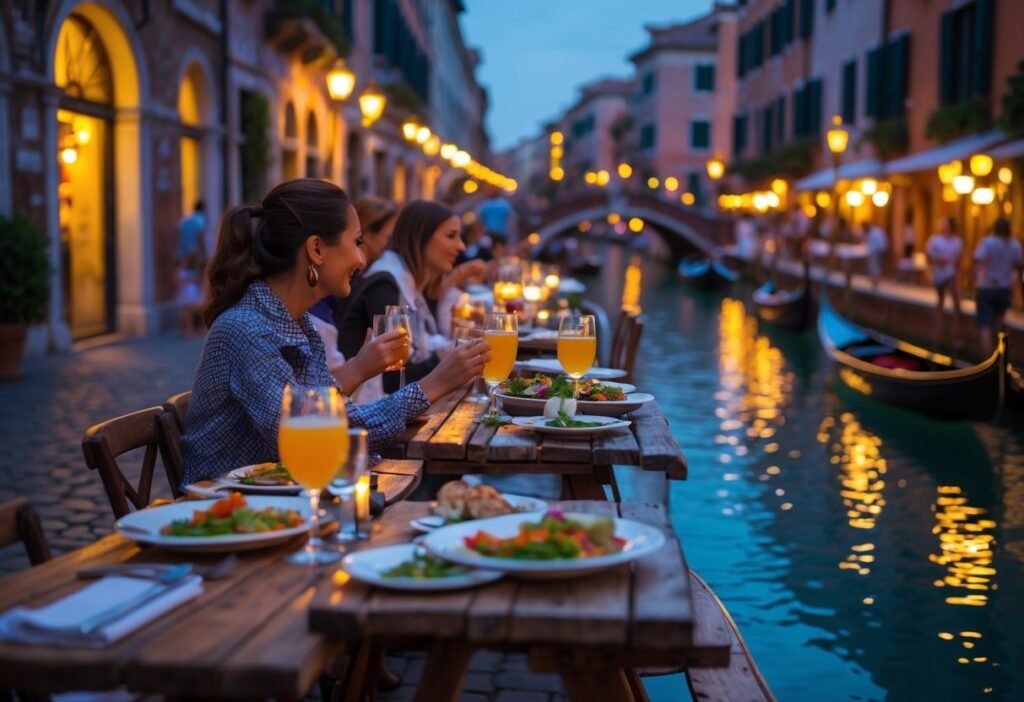
You’ll find some of Milan’s best food and nightlife clustered around its historic canals. There’s a mix of old-school dishes, casual street snacks, lively bars, and a few scenic corners you’ll want to linger in.
Honestly, just strolling along the waterways adds a kind of magic to your evening plans. It’s hard not to get swept up in the atmosphere.
Dining and Street Food Highlights
Right in the heart of Milan’s canal area, you’ll run into classic Milanese dishes like risotto alla Milanese and ossobuco. Many spots put a big emphasis on fresh, local ingredients—there’s a pride in keeping it real.
If you’re after something fuss-free, grab a panzerotti, the beloved fried turnover that’s perfect for eating on the move. It’s the kind of thing you’ll crave again later.
Street food stalls and tiny, no-frills eateries line parts of the Navigli District. There are plenty of quick, tasty options to keep you fueled between bigger meals.
Try a few sample tastings—maybe some fresh cheese or cured meats—if you want a real taste of the city. If you’ve got your heart set on a particular restaurant, booking ahead is smart, especially on weekends.
Vibrant Evenings in Navigli District
Once the sun goes down, Navigli District really wakes up. Bars and cafes along the canals start to fill with people, and there’s a friendly, energetic vibe that somehow never feels overwhelming.
You’ll want to try aperitivo—order a drink, and you get access to a spread of snacks, usually buffet style. It’s a great way to sample lots of little bites while chatting with friends or even strangers.
Many venues stay open late. Some have live music, and there’s plenty of relaxed seating by the water if you just want to soak it all in.
Exploring Naviglio Grande and Naviglio Pavese
Naviglio Grande and Naviglio Pavese are the main canals you’ll want to check out. Naviglio Grande is the bigger one, lined with artisan shops, markets, and cafes—it’s got a creative energy that’s contagious.
Walking here feels like a mini adventure, and you can always stop for a drink or snack whenever you feel like it. Honestly, it’s hard to get bored.
Naviglio Pavese heads south and has a quieter, more local vibe. It’s a nice break from the main hub, with calmer pockets where you can just relax.
Both canals are easy to walk or bike along, so you can spend a whole day exploring if you feel like it. Don’t skip Vicolo dei Lavandai, a tiny alley by Naviglio Grande with a quirky bit of history—old laundresses used to work there, and there’s still a bit of that charm left.
Insider Tips for an Unforgettable Milan Weekend
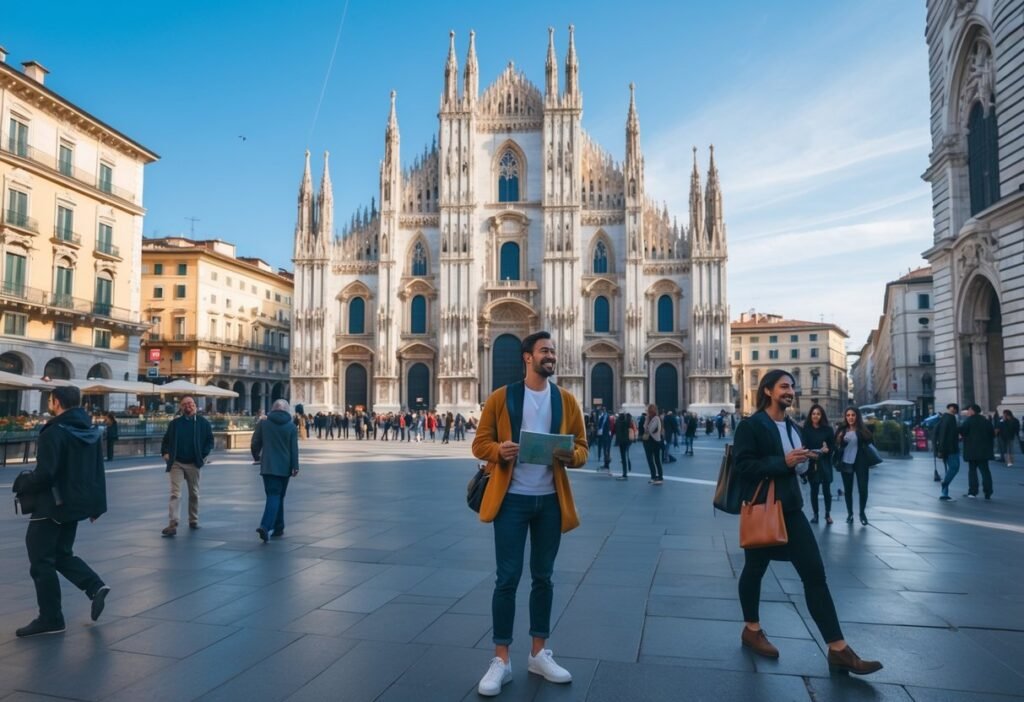
If you want your Milan weekend to feel special, pay attention to local events and customs. Try to wander off the main tourist paths, and plan visits to popular sights early or late to dodge the crowds.
Milan’s got this cool mix of tradition and hidden corners. Sometimes you just have to let yourself get a little lost to find the good stuff.
Seasonal Events and Local Customs
The city comes alive with different events throughout the year. In spring and early summer, there’s Fuorisalone design week—a wild citywide mashup of exhibitions, parties, and creative chaos.
Autumn brings wine festivals and food fairs, especially in the nearby countryside. If you’re a foodie, that’s your moment.
Just a heads up: Italians love a long lunch break, usually from 1 to 3 PM. Some smaller shops or restaurants might shut their doors for a bit, so plan accordingly.
The aperitivo ritual is a big deal here. Join in at a Navigli bar and you’ll get a real taste of local life—snacks, drinks, and plenty of conversation.
Off-the-Beaten-Path Sights
Sure, the Duomo and Galleria Vittorio Emanuele II are classics, but there’s more. The Brera District is great for art galleries and quieter streets, if you need a breather.
Villa Necchi Campiglio gives you a peek into Milanese life from the last century—plus, it’s rarely crowded. Sometimes it feels like a secret.
The canals of Navigli still have hidden corners, especially if you wander a few blocks from the busiest spots. And if you’re into history (or just want something different), the Cimitero Monumentale is full of grand sculptures and stories, yet most tourists skip it.
So, that’s a little slice of Milan beyond the obvious. Whether you’re here for the food, the nightlife, or just the feeling of wandering somewhere new, there’s always another layer waiting. Honestly, the best memories usually come from the places you stumble into by accident—so don’t worry too much about planning every detail. Just get out there and let Milan surprise you.
Strategies for Avoiding Tourist Crowds
Start your day early by visiting landmark spots like the Duomo before 9 AM. That’s when the crowds are thinnest, and honestly, your photos will thank you.
Avoid weekends at major museums if you can. Weekday mornings are just so much calmer—if your schedule’s flexible, it’s worth it.
Hop on public transport like trams or the metro to dodge traffic and skip the headache of taxi lines. Booking tickets for popular attractions online ahead of time is another lifesaver.
Maybe check out some of Milan’s less famous churches or parks, too. Sometimes those quieter corners end up being the highlight of the trip.
In the end, a little planning goes a long way. With a bit of flexibility and curiosity, you can actually enjoy Milan without feeling like you’re elbowing through a sea of tourists. Isn’t that what travel’s supposed to be about?
Final Thoughts: Making the Most of Milan
In just a weekend, Milan can surprise you with its mix of old and new, high fashion and street life, art and coffee breaks.
Don’t stress about seeing it all—pick a few highlights, wander a little, and let the city’s energy do the rest.
And if you’ve got time, a quick trip to Lake Como is always worth it.
Milan isn’t just a stopover—it’s a place to savor, even if it’s only for a couple of days. Buon viaggio!


